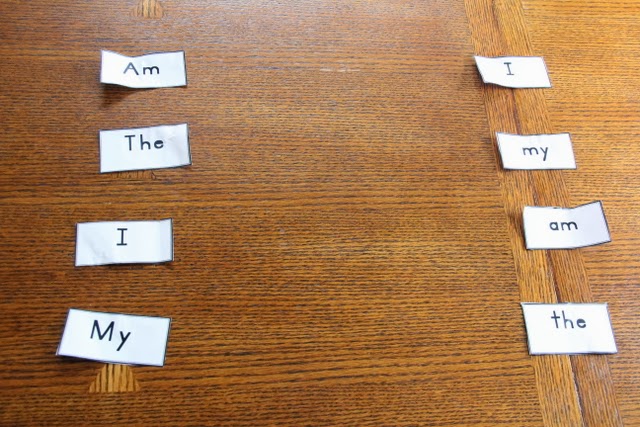

Students work on their own with a timer and try to improve their time.ģ.Students race against a partner to see who can sort faster.Students start sorting their words when you say “go.” They stand up when they’re done.Speed Sort – Lots of kids are motivated by competition. Keep in mind: this might be a “sometimes” activity because finding and marking the patterns is beneficial but students could then rely too heavily on color matching instead of pattern recognition when using the word sort repeatedly.Ģ. Highlight the pattern – When kids notice familiar letter patterns in words, suddenly they go from tediously sounding out “c – a – t” to fluently putting together chunks in bigger words, like “c – au – tion.” Have students use highlighters (and even color-coding) to mark the patterns they find. These tasks work well as part of a daily whole-class word study time, a spelling center, or as homework.ġ. With simple supplies that you probably already have, you can easily switch up your word study routine to keep it interesting. You might be thinking: Ok, word sorts improve spelling, but don’t kids get bored with lining up word cards? How do I keep the task fresh so kids stay engaged? Word sorts help you explicitly teach phonics skills and tap into the power of word families, both research-based strategies for teaching. Studies show that students who receive word sort instruction perform better in phonemic segmentation, word identification, and spelling than students who receive traditional spelling instruction. I was excited to learn that researchers find word sort activities improve not only spelling, but also reading skills! They practice with the spelling sort in a variety of waysĭo Sorting Activities Actually Improve Spelling?.They sort cards with words that each fit into each of the categories.Kids learn the sound or rule for each category.

Words in a sort are chosen because they fit in specific categories. With no rhyme or reason to the word lists, it WAS a tedious effort to memorize those spellings.īut that’s just the way spelling had to be… or was it?
#Words their way word sorts for older children how to
In the early 90s the weekly spelling lists were a random collection of words that someone, in some office, somewhere, thought kids needed to know how to spell. The question is: why, for a decent reader and writer like me, was it so hard to memorize the words on my spelling list?

That’s when my mom stepped in with something loud and theatrical to sear the word into my memory (and also to get my perfectionistic butt to bed!) I did the typical practice, copy the word a few times, try it from memory, question what in the world is wrong with me when my attempt doesn’t match the narrow paper list… again! It wasn’t that my mom loved spelling like teachers love a snow day. “B clap, U-R clap, R-I clap -E-D!” she’d chant. I hope it helps.N Thursday nights when I was in 2nd grade, my mom turned into a spelling cheerleader. Have a look at this comment thread for more examples and explanation. In fact, I would say that sentence 2 needs to have an article, for this reason -> The sharing of new ideas. In sentence 2 we understand Sharing more as a noun (i.e., the name of an activity) because it has a preposition. We could also, for example, add an adverb: Sharing new ideas frequently. In sentence 1 we understand Sharing more as a verb (i.e., referring to doing something) because it has a direct object. needs a preposition takes an article takes an adjective rather than an adverb). can take a direct object can take an adverb) or more characteristics of a noun (e.g.

It may have more characteristics of a verb (e.g. It's a good question! Basically, the meaning is very similar in 1 and 2, but we understand Sharing as a different word type (verb or noun) in them.Īn - ing form is somewhere between a verb and a noun. Verbs followed by '-ing' or by 'to' + infinitive' 1: Grammar test 2 Other verbs in this group include afford, agree, ask, choose, decide, expect, hope, plan, prepare, promise, refuse and would like.ĭo this exercise to test your grammar again. When want, learn and offer are followed by another verb, it must be in the to + infinitive form. Like and love can be followed by the - ing form and the to + infinitive form. Other verbs in this group include avoid, can't help, consider, dislike, feel like, finish, give up, miss, practise and suggest. When enjoy, admit and mind are followed by another verb, it must be in the - ing form. Which form you need depends on what the first verb is. The second one usually needs to change into the - ing form or the to + infinitive form. Grammar explanationĪ verb can be followed by another verb. Verbs followed by '-ing' or by 'to' + infinitive 1: Grammar test 1 Look at these examples to see how the verb forms are used.


 0 kommentar(er)
0 kommentar(er)
